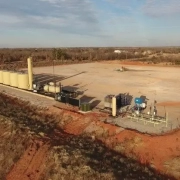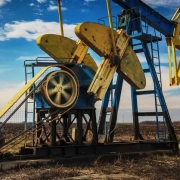The information provided on this page is for general informational purposes only and does not constitute legal, financial, or investment advice. Oil and gas laws, mineral rights regulations, and royalty structures vary significantly by state and jurisdiction. While we strive to provide accurate and up-to-date information, no guarantee is made to that effect, and laws may have changed since publication.
You should consult with a licensed attorney specializing in oil and gas law in your jurisdiction, a qualified financial advisor, or other appropriate professionals before making any decisions based on this material. Neither the author nor the publisher assumes any liability for actions taken in reliance upon the information contained herein.
Oil and gas royalties represent a unique investment opportunity. Whether you are an individual landowner or an entity with mineral rights, the decision to sell your oil and gas royalties is a significant financial move. To maximize the value of your assets and ensure a smooth transaction, it’s crucial to understand the process, consider various factors, and be aware of potential pitfalls. In this comprehensive guide, we will explore the tips and strategies for selling oil and gas royalties to maximize their value. With a well-informed approach, you can make the most of your investment in the energy sector.
Understanding Oil and Gas Royalties
Oil and gas royalties are payments made to mineral rights owners in exchange for the right to extract, produce, and sell valuable subsurface resources. These resources can include oil, natural gas, coal, metals, and various minerals. Royalties are typically a percentage of the revenue generated from resource extraction.
The Decision to Sell: Factors to Consider
Before deciding to sell your oil and gas royalties, consider the following factors:
- Financial Goals: Assess your financial objectives, whether it’s to generate immediate income, diversify your investments, or mitigate risk.
- Property Evaluation: Evaluate the geological potential of your property and the projected income from royalties.
- Market Conditions: Study the current oil and gas market conditions, commodity prices, and global energy trends.
- Long-Term Planning: Consider the long-term implications of selling, including potential future income loss and property value.
Researching the Market
To maximize the value of your royalties, conduct thorough market research:
- Market Trends: Stay informed about current market trends and how they affect the demand and value of royalties.
- Buyer Behavior: Understand the behavior and strategies of potential buyers in the market.
- Pricing Benchmarks: Analyze recent royalty transactions in your region to establish pricing benchmarks.
Valuing Your Royalties
Accurately valuing your royalties is critical to securing a fair deal. Consider these factors:
- Royalty Rate: The percentage of revenue you receive as royalties is a fundamental factor in valuation.
- Production Decline: Assess the production decline curve of your property to estimate future royalty income.
- Commodity Prices: Monitor fluctuations in oil and gas prices and their impact on the value of your royalties.
Preparing for the Sale
Proper preparation is essential to maximize the value of your royalties:
- Organize Documentation: Gather all relevant documentation, including royalty agreements, legal records, and tax documents.
- Property Inspection: Conduct a thorough property inspection to understand the condition and production potential.
- Financial Evaluation: Review your financial situation to ensure you are prepared for potential tax implications and changes in income.
Finding the Right Buyer
To maximize the value of your royalties, you need to find the right buyer:
- Identify Potential Buyers: Research potential buyers, which may include individual investors, energy companies, or investment groups.
- Due Diligence: Evaluate the reputation, financial stability, and track record of potential buyers.
- Negotiate Terms: Seek favorable terms that align with your financial goals and maximize the value of your royalties.
Negotiating the Deal
Effective negotiation is crucial to securing a favorable deal:
- Seek Expert Assistance: Consider hiring a professional, such as a broker or attorney, to assist with negotiations.
- Royalty Rate: Negotiate the royalty rate and other terms to maximize your income while satisfying the buyer’s requirements.
- Payment Structure: Discuss payment structure options, such as lump-sum payments or periodic installments.
Legal and Financial Aspects
To ensure a smooth transaction, consider the following legal and financial aspects:
- Legal Review: Seek legal advice to review and finalize the sales contract and ensure compliance with regulations.
- Tax Implications: Consult with tax professionals to understand the tax consequences of the sale and plan for any potential tax liability.
- Escrow Services: Consider using escrow services to protect both parties in the transaction.
Tax Implications
The sale of oil and gas royalties has tax implications that need to be understood:
- Capital Gains Tax: Depending on the nature of the transaction and your tax situation, capital gains tax may apply.
- Tax Planning: Develop tax-efficient strategies to minimize tax liability, such as spreading out income over time.
Closing the Transaction
The finalization of the sale involves several key steps:
- Due Diligence: Both parties conduct due diligence to ensure all terms and conditions are met.
- Transfer of Documents: Transfer all necessary documents, including royalty agreements and legal records.
- Payment: The buyer provides the agreed-upon payment to the seller.
Post-Sale Considerations
After the sale, consider how to manage your financial situation:
- Investment Options: Determine how you will manage the proceeds from the sale and explore investment opportunities.
- Tax Compliance: Ensure that you comply with any tax obligations resulting from the sale.
- Reinvestment Plans: If your financial goals include further investments, develop a reinvestment plan.
Selling oil and gas royalties can be a strategic financial move, but it requires careful consideration, preparation, and a well-informed approach. To maximize the value of your royalties, understand the market, conduct thorough research, and engage with professional advisors. With the right strategy and due diligence, you can secure a favorable deal that aligns with your financial objectives while realizing the full potential of your investment in the energy sector.











